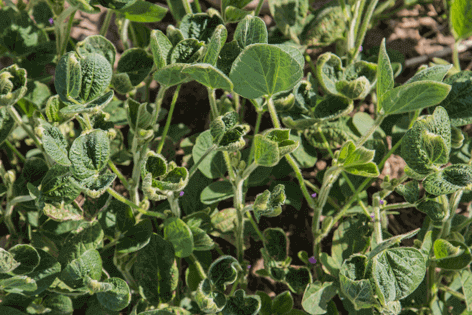Toxic Pesticides
Farmers depend upon pesticides to protect their crops from destructive insects, weeds, bacteria and other pests. But the potent chemicals they use can also impact humans. Exposure to pesticides can make you ill, and some products have been linked to cancer and neurological problems in children.

Pesticides are chemicals and other substances that kill unwanted insects, plants, fungi and animals — and they’re especially important for agriculture. Most farmers rely on pesticides to increase the production of their crops and protect them from pests and disease.
But pesticides can also harm the environment and injure people.
The combination of substances with probably carcinogenic or endocrine-disrupting effects may produce unknown adverse health effects.
Agricultural laborers and others who work directly with pesticides are most susceptible to the toxic effects. The everyday consumer may also encounter these chemicals in much lower levels through pesticide residue in food and water.
According to a 2016 article on chemical pesticides and human health in the journal Frontiers in Public Health, washing and peeling foods can’t entirely remove residues. And “safe limits” established by regulatory bodies may underestimate potential health risks because of chronic exposure to multiple chemicals.
“The combination of substances with probably carcinogenic or endocrine-disrupting effects may produce unknown adverse health effects,” the authors wrote. “Therefore, the determination of ‘safe’ levels of exposure to single pesticides may underestimate the real health effects, ignoring also the chronic exposure to multiple chemical substances.”
Pesticide Regulation
Pesticides are regulated at the federal level by the Environmental Protection Agency. States also oversee pesticide use, usually through their state agriculture office.
Pesticide manufacturers are required to register with the EPA and file production reports. Before a pesticide is approved for use, the agency is supposed to evaluate the potential health and environmental effects of the pesticide. The EPA can also ban pesticides it’s already approved if it later discovers they are dangerous.
Every pesticide that’s registered with the EPA must have a label that provides important information on how to safely handle the product. These labels are legally binding — meaning that it’s illegal to use a pesticide in a manner that’s not consistent with the label.
The EPA also decides the maximum levels of pesticide residues that are allowable in food.
Unfortunately, the dangers of pesticides aren’t always discovered right away.
After it was developed in the 1940s, Dichloro-diphenhyl-trichloroethane, better known as DDT, was used on a widespread basis to combat the spread of insect-borne diseases such as malaria. It wasn’t until 1972 — after DDT was linked to cancer and found to threaten wildlife — that the United States banned the use of DDT.
Today, other pesticides are generating similar concerns.
Paraquat Dangers
As the EPA notes, paraquat is “highly toxic,” one “small sip can be fatal” and “there is no antidote.” It is also one of the most widely used herbicides in the United States.
In July 2021, after reviewing public comments, the EPA released an interim decision that established elevated prohibitions, limitations and requirements in an effort to further limit paraquat exposure. The EPA’s new “enforceable mitigation measures” include:
- Prohibiting: pressurized handgun and backpack sprayer application methods, as well as the use of human flaggers.
- Limiting: aerial applications to a maximum of 350 acres per applicator per 24-hr period for all uses except cotton desiccation and the maximum application rate for alfalfa to one pound of paraquat cation per acre.
- Requiring: a residential area drift buffer for all aerial applications; enclosed cabs if area treated in 24-hour period is more than 80 acres; enclosed cabs or PF10 respirators if area treated in 24-hour period is 80 acres or less; a 7-day restricted entry interval (REI) for cotton desiccation; a 48-hour REI for all crops and uses except cotton desiccation; and mandatory spray drift management label language.
Because the dangers of paraquat exposure are so extreme, all paraquat products registered for use in the U.S. are Restricted Use Pesticides (RUPs) and are not available for consumer use. Only professionals who are trained and certified can use them. However, the EPA did update its Restricted Use Pesticide statement on paraquat labels. Uncertified truck drivers can transport paraquat under certain conditions.
While the EPA has toughened rules around paraquat’s use, people have been exposed and experienced serious health complications. Because of these long-term health effects, as well as allegations that paraquat product manufacturers knew of the dangers and did not adequately warn the public, the volume of paraquat lawsuits filed led the the United States Judicial Panel on Multidistrict Litigation to consolidate them. As of July 2021, 173 federal cases were pending.
Roundup Controversy
In 2018, The New York Times reported that a study conducted by the Environmental Working Group had found elevated levels of glyphosate in Cheerios, granola bars and 29 other breakfast foods made from oats. The controversial herbicide is the main ingredient in Monsanto’s Roundup weed killer, the most-used pesticide in the world.
California scientists have said Roundup can cause cancer in humans, and the World Health Organization has declared it a “probable human carcinogen” — one of five categories the EPA uses to classify chemicals based on their likelihood to cause cancer in humans.
A California jury agreed and, in 2018, awarded $289 million in damages to a former school groundskeeper who claimed he had developed cancer after regular exposure to the chemical.
The EPA has said glyphosate is “not likely carcinogenic.” But hundreds of other Roundup lawsuits are pending against Monsanto, which is a division of Bayer AG.
Malathion Concerns
Malathion, an organophosphate, is another common pesticide under scrutiny. Farmers, residential landscapers and other workers in the United States use about 1 million pounds of the insecticide every year to control a range of pests.
Public health officials use it to get rid of mosquitoes. Others use it to combat fruit flies. It’s also a common ingredient in shampoos used to kill lice.
Accidentally inhaling or ingesting malathion can disrupt your nervous system and make you sick.
- Trouble breathing
- Tightness of the chest
- Vomiting, cramps and diarrhea
- Watery eyes and blurred vision
- Headaches and dizziness
- Increased salivation
- Sweating
- Loss of consciousness
- Death
Some studies have suggested a link between malathion exposure and possible developmental disorders in children. And the World Health Organization has classified the chemical as a probable human carcinogen.
A 2017 “biological analysis” of the chemical by the EPA found that malathion is “likely to adversely affect” 97 percent of the federally protected species it comes in contact with.
In 2018, several conservation and public health groups sued the EPA, the U.S. Fish and Wildlife Service and the Department of Interior for “failing to protect endangered wildlife and the environment” from the “dangerous pesticide.”
Dicamba Crop Damage
A chemical called dicamba is also generating controversy. The 1960s-era herbicide controls weed growth in certain grain crops, grasslands and pastures. But because many plants are extremely sensitive to the toxic weed killer, the EPA for many years only permitted dicamba spraying on fields before they were planted.
That changed in 2017 when Monsanto Co. and the German chemical company BASF introduced a less volatile formulation of dicamba alongside new varieties of soybean and cotton seeds that had been genetically altered to tolerate the herbicide.
The idea was to provide an alternative to Roundup because weeds were becoming resistant to it. Many farmers jumped on board and planted 25 million acres of the new seed varieties.
But there was a problem.
Dicamba doesn’t always stay put, and when the chemical drifted into neighboring farms that weren’t using dicamba-resistant seeds, it devastated their crops.
Since 2017, farmers in 17 states have filed more than 1,400 complaints regarding 2.5 million acres of crops damaged by dicamba drift. Many filed dicamba lawsuits against Monsanto that claimed the company acted recklessly and should have warned them about the potential dangers of the herbicide.

Chlorpyrifos Controversy
Most household uses of chlorpyrifos were banned in 2000. But the controversial insecticide is still sprayed on food crops to combat a variety of pests, including roundworms, caterpillars, beetles and weevils. It’s also used on golf courses to eradicate fire ants.
Chlorpyrifos is sold under a number of brand names, including Lorsban, Dursban, Lock-On and Cobalt. It essentially works as a nerve agent by preventing chemical communication between nerve cells, but it can also disrupt humans’ nervous systems and studies have linked the chemical to developmental delays and autism in children.
Developing fetuses exposed to the chemical via their mothers are also at risk. Even low levels of exposure can lead to potentially permanent changes in a child’s brain structure, according to a 2012 study by researchers at Columbia University, Duke University, Emory University and New York State Psychiatric Institute.
Environmental groups have attempted for years to get the EPA to ban the pesticide. While EPA scientists at the agency have also supported a ban, farm groups have fought back, arguing that it would harm food production. The U.S. Department of Agriculture has also defended the pesticide’s use, and in 2017, then-EPA Administrator Scott Pruitt rejected an outright ban on the chemical.
Since then, the battle over chlorpyrifos has moved to the courts. In August of 2018, a federal appeals court ordered the EPA to ban the pesticide. The EPA appealed that decision and the 9th U.S. Circuit Court of Appeals agreed to rehear the case in 2019. In the meantime, the controversial chemical continues to be used.
Safety Tips
Most pesticides can pose a risk to humans and animals. To reduce your exposure to toxic chemicals, wash produce before consuming it and remove the outer leaves of lettuce and other leafy vegetables.
Some people prefer to buy organic vegetables to minimize their exposure, but it’s still important to wash your produce. While organic farmers use fewer toxic chemicals in general, most still use certain pesticides to protect their crops.
If you are using a pesticide in or around your home, be sure to read and follow all label instructions on the product.
The National Pesticide Information Center also recommends doing the following:
- Only mix pesticides outside or in areas with good ventilation.
- Wear protective clothing such as long pants, a long-sleeved shirt and closed-toe shoes.
- Have paper towels, sawdust or cat litter, garbage bags and non-absorbent gloves on hand in case you have to clean up a spill.
- Mix only what you need to avoid having to store or dispose of excess chemicals.
- Stay out of treated areas for the amount of time recommended on the label.
In the event of a pesticide emergency, call 911 and the Poison Control Centers’ national hotline phone number, 1-800-222-1222. If your pet is poisoned, get emergency advice from the ASPCA Animal Poison Control Center at 888-426-4435. A $65 consultation fee may apply. You can also call the Pet Poison Helpline at 800-213-6680 and receive help for $59.
37 Cited Research Articles
Consumernotice.org adheres to the highest ethical standards for content production and references only credible sources of information, including government reports, interviews with experts, highly regarded nonprofit organizations, peer-reviewed journals, court records and academic organizations. You can learn more about our dedication to relevance, accuracy and transparency by reading our editorial policy.
- Agency for Toxic Substances & Disease Registry. (2003, September). Toxic Substances Portal — Malathion. Retrieved from https://wwwn.cdc.gov/TSP/PHS/PHS.aspx?phsid=520&toxid=92
- Bellon, T. (2018, July 11). Lawsuits Against Monsanto’s Roundup Cleared for Trial. Retrieved from https://www.insurancejournal.com/news/national/2018/07/11/494711.htm
- CBS News. (2018, August 15). Weed-killing chemical linked to cancer found in some children’s breakfast foods. Retrieved from https://www.cbsnews.com/news/glyphosate-roundup-chemical-found-in-childrens-breakfast-foods/
- California Office of Environmental Health Hazard Assessment. (2017, July 7). Glyphosate Listed Effective July 7, 2017 as Known to the State of California to Cause Cancer. Retrieved from https://oehha.ca.gov/proposition-65/crnr/glyphosate-listed-effective-july-7-2017-known-state-california-cause-cancer
- Center for Biological Diversity. (2018, May 30). Lawsuit Seeks to Force EPA to Curb Risks from Dangerous Pesticide Malathion. Retrieved from https://www.biologicaldiversity.org/news/press_releases/2018/malathion-05-30-2018.php
- Center for Environmental Health, Center for Biological Diversity, and Californians for Pesticide Reform v. E. Scott Pruitt, United States Environmental Protection Agency, United States Fish and Wildlife Service and Ryan Zinke. (2018, May 30). Complaint for Declaratory and Injunctive Relief. Retrieved from https://www.biologicaldiversity.org/campaigns/pesticides_reduction/pdfs/2018-5-30-Malathion-Complaint.pdf
- Charles, D. (2018, November 1). The EPA Says Farmers Can Keep Using Weedkiller Blamed For Vast Crop Damage. Retrieved from https://www.npr.org/sections/thesalt/2018/11/01/662918255/the-epa-says-farmers-can-keep-using-weedkiller-blamed-for-vast-crop-damage
- Columbia Mailman School of Public Health. (2010, March 22). Pesticide Chlorpyrifos Is Linked to Childhood Developmental Delays. Retrieved from https://www.publichealth.columbia.edu/public-health-now/news/pesticide-chlorpyrifos-linked-childhood-developmental-delays
- Cornell University Extension Toxicology Network. (2012). Toxicity of Pesticides. Retrieved from http://psep.cce.cornell.edu/Tutorials/core-tutorial/module04/index.aspx
- Cornell University Extension Toxicology Network. (1993, September). Dicamba. Retrieved from http://pmep.cce.cornell.edu/profiles/extoxnet/carbaryl-dicrotophos/dicamba-ext.html
- Damalas, C.A. & Eleftherohorinos, I.G. (2011, May). Pesticide Exposure, Safety Issues, and Risk Assessment Indicators. Retrieved from https://www.ncbi.nlm.nih.gov/pmc/articles/PMC3108117/
- Environmental Protection Agency. (2018, September 24). Chlorpyrifos. Retrieved from https://www.epa.gov/ingredients-used-pesticide-products/chlorpyrifos
- Environmental Protection Agency. (2017, May 4).Introduction to Pesticide Labels. Retrieved from https://www.epa.gov/pesticide-labels/introduction-pesticide-labels
- Gillam, C. (2018, August 11). One man’s suffering exposed Monsanto’s secrets to the world. Retrieved from https://www.theguardian.com/business/2018/aug/11/one-mans-suffering-exposed-monsantos-secrets-to-the-world
- Gillam, C. (2018, May 8). Weedkiller products more toxic than their active ingredient, tests show. Retrieved from https://www.theguardian.com/us-news/2018/may/08/weedkiller-tests-monsanto-health-dangers-active-ingredient
- Hakim, D. (2017, September 21). Monsanto’s Weed Killed, Dicamba, Divides Farmers. Retrieved from https://www.nytimes.com/2017/09/21/business/monsanto-dicamba-weed-killer.html
- Jenkins, D. (2019, February 12). Court grants EPA new hearing on pesticide ban. Retrieved from https://www.capitalpress.com/nation_world/court-grants-epa-new-hearing-on-pesticide-ban/article_cabeaea2-2e52-11e9-a7a8-e7d17a44764c.html
- Konkel, L. (2014, June 23). Autism Risk Higher Near Pesticide-Treated Fields. Retrieved from https://www.scientificamerican.com/article/autism-risk-higher-near-pesticide-treated-fields/
- Lipton, E. (2018, August 9). Court Orders E.P.A. to Ban Chlorpyrifos, Pesticide Tied to Children’s Health Problems. Retrieved from https://www.nytimes.com/2018/08/09/us/politics/chlorpyrifos-pesticide-ban-epa-court.html
- National Pesticide Information Center. (2018, May 2). EPA Pesticide Regulation. Retrieved from http://npic.orst.edu/reg/epareg.html
- National Pesticide Information Center. (2019, May). Malathion. Retrieved from http://npic.orst.edu/factsheets/malagen.html
- National Pesticide Information Center. (2018, August 29). Safe Use Practices for Pesticides. Retrieved from http://npic.orst.edu/health/safeuse.html
- National Pesticide Information Center. (n.d.). Pesticides — What’s my Risk? Retrieved from http://npic.orst.edu/factsheets/WhatsMyRisk.html
- Nickel, R. (2017, August 2). Drifting crop chemicals deal ‘double whammy’ to farmers. Retrieved from https://www.reuters.com/article/us-usa-pesticides-farmers/drifting-crop-chemical-deals-double-whammy-to-u-s-farmers-idUSKBN1AI1I2
- National Center for Health Housing. (n.d.). Product Standards: EPA Pesticides and CPSC Consumer Products. Retrieved from https://nchh.org/resource-library/EPA%20Product%20Standards%20-%20Pesticides%20and%20CPSC%20Products.pdf
- O’Neill, E. (2019, February 26). Will An Appeals Court Make the EPA Ban a Pesticide Linked to Serious Health Risks? Retrieved from https://www.npr.org/sections/thesalt/2019/02/26/698227414/will-an-appeals-court-make-the-epa-ban-a-pesticide-linked-to-serious-health-risk
- Philpott, T. (2017, March 27). UPDATED: Trump’s EPA Just Greenlighted a Pesticide Known to Damage Kids’ Brains. Retrieved from https://www.motherjones.com/environment/2017/03/trump-epa-brain-damaging-pesticide/
- Rauh, V.A. et al. (2012, April 30). Brain anomalies in children exposed prenatally to a common organophosphate pesticide. Retrieved from https://www.pnas.org/content/early/2012/04/25/1203396109.abstract
- Salama, M. et al. (2015, December). Developmental neurotoxic effects of Malathion on 3D neurosphere system. Retrieved from https://www.ncbi.nlm.nih.gov/pmc/articles/PMC4803784/
- Sass, J. (2019, January 16). House Bill Would Ban Chlorpyrifos, Protect Kids. Retrieved from https://www.nrdc.org/experts/jennifer-sass/house-bill-would-ban-chlorpyrifos-protect-kids
- Temkin, A. (2018, August 15). Breakfast With a Dose of Roundup? Weed Killer in $289 Million Cancer Verdict Found in Oat Cereal and Granola Bars. Retrieved from https://www.ewg.org/research/breakfast-dose-roundup
- Community Action Works. (n.d.). Pesticides: The Problem. Retrieved from https://communityactionworks.org/issues/pesticides/
- U.S. National Library of Medicine. (n.d.). ToxTown. Retrieved from https://toxtown.nlm.nih.gov/chemicals-and-contaminants/pesticides
- World Health Organization. (1999). Contaminated Soil in Gardens: How to avoid the harmful effects. Retrieved from http://www.euro.who.int/__data/assets/pdf_file/0009/119187/E64737.pdf
- World Health Organization. (2010). Exposure to Highly Hazardous Pesticides: A Major Public Health Concern. Retrieved from https://www.who.int/ipcs/features/hazardous_pesticides.pdf?ua=1
- World Health Organization. (n.d.). Pesticide residues in food. Retrieved from https://www.who.int/news-room/fact-sheets/detail/pesticide-residues-in-food
- Zaveri, M. (2018, August 15). Report Finds Traces of a Controversial Herbicide in Cheerios and Quaker Oats. Retrieved from https://www.nytimes.com/2018/08/15/health/herbicide-glyphosate-cereal-oatmeal-children.html
Calling this number connects you with a Consumer Notice, LLC representative. We will direct you to one of our trusted legal partners for a free case review.
Consumer Notice, LLC's trusted legal partners support the organization's mission to keep people safe from dangerous drugs and medical devices. For more information, visit our partners page.
844-420-1914
